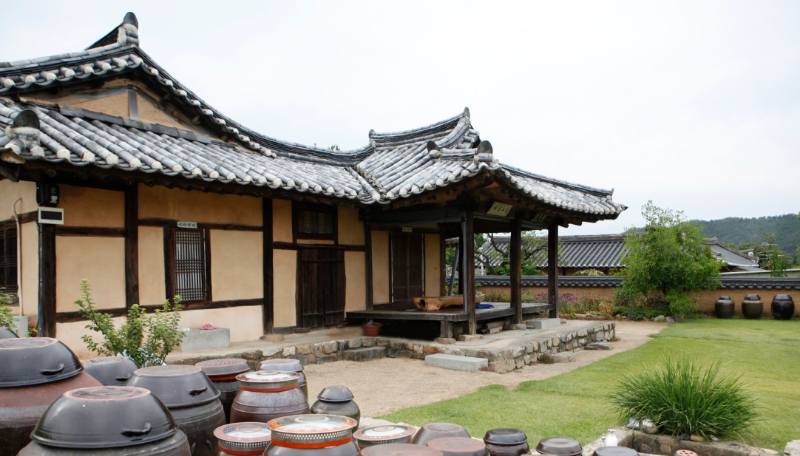Hahoe Pungjeong View from Mansongjeong Forest A place where everyone knows the name, the scenery familiar to everyone, but the inspiration that will never wear out. Hahoe Village, and Mansongjeong Forest. As you enter the shade of the tree, the scent of pine trees suddenly overflows, and on the other side, ink paintings that seem to have been painted with ink, and on the other side, genre paintings that seem to have been described with fine strokes are unfolded. The ink paintings included Okyeonjeongsa Temple and Gyeomamjeongsa Temple at the edge of the cliff across the river, and the folk paintings included Wonjijeongsa Temple and Binyeonjeongsa Temple, which are covered in the village. All of them are the inheritance of brothers Seoae Ryu Seong-ryong and Gyeomam Ryu Un-ryong.
A study as deep as a river and as high as Buyongdae must have matured here. I looked at Buyongdae for a while from Wonjijeongsa Temple, where Seo-ae read and took care of herself, and from Binyeonjeongsa Temple, where Gyeomam, who resigned from government office, returned home and wrote as a study. It is a dark landscape. As you reach deep into the alley, you can see a narrow side road. In the distance, an old giant tree stood tall with a stretching figure. As if possessed, I often walked up to it, and a simple notice informs the history of the tree. Samsindang is located in the center of Hahoe Village. It is a tree known to have been planted by Ryu Jong-hye when she entered the village and is considered sacred by the villagers."
The last sentence ends like this. "This is where Hahoe Byeolsingut Talnori begins." Rub your eyes and look again. The precious Samsindang zelkova tree, the wish paper fluttering like a white butterfly, and the fence with the wish paper hanging tightly were located in a perfect composition. As if protecting everyone, protecting the center is a Hahoe decoration box that is as tall as a person. Hahoe Tal's strange expression, which seems to have been distorted after smiling broadly, becomes an unforgettable image once you see it and stirs up your mind. Every step around the village, the eyes and corners of the mouth were stepped on, so I decided to find a performance of Hahoe Byeolsingut Talnori. I wanted to see the reality of the word "false laughter."
Hahoe Village Jisan Old House - accommodation
In 1841, Jisan Ryu Ji-young (1828 Sunjo 28-1896, Gunyang 1) who served as Andong's deputy governor between Saganwon and Seungjeongwon won the victory, received a bonsai at Yeomhaengdang. The last student of Toegyehakmaek, Lee Shin, studied here and served in various government posts in the liberal arts department of 1857. He chose integrity and cultivation of respect as his resignation and named the title "Resonance Party". The new house of the old house was demolished over 200 years, but the main house, the lower house, and the detached house are well preserved to this day. In particular, Jisanru, a detached house, creates an atmosphere like a shrine built to cultivate the mind and body. The open lawn yard, spacious parking lot, and garden still make the old house stand out coolly.
Jisan Old House, which has a history of more than 150 years, was designated as Gyeongsangbuk-do Folklore Material No. 140 in 2010. Hanok, located in the spacious lawn yard, creates an antique look by containing traces of time. In addition, it is a place where people continue to visit because it has a quiet rest area and various experience programs. When you enter the Jisan old house surrounded by a low fence, you can see a lawn yard. Beacon flowers, peonies, and cosmos are growing in the garden flower bed, and Jangdokdae Pavilion is gathered on one side. And when you turn around the Sarangbang beyond the lawn yard, the U-shaped body and the-shaped lower house form a square-shaped structure. Originally, the Sarangbang and the main room are bound to be separated, but it is said that the house was made in a form that was attached to each other with Jisan's belief not to make the house big. However, because men and women are separated, the main room was not visible from the Sarangbang. Also, it is said that neither a tall gate nor a shrine was built on purpose.

댓글